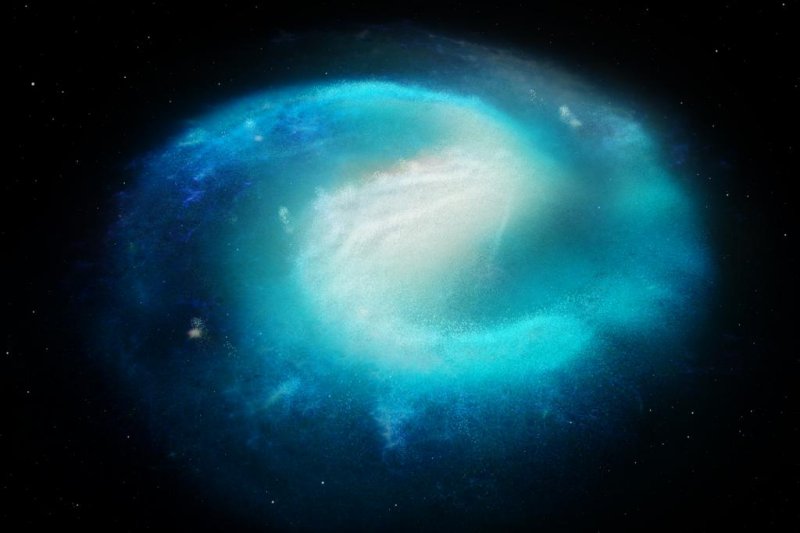An artistic rendering of the distant galaxy in which hydrogen was recently measured by the Very Large Array. Photo by ICRAR/Peter Ryan
SOCORRO, N.M., June 2 (UPI) -- Astronomers recently picked up the signal of a distant glob of hydrogen, glowing some five billion light-years from Earth -- nearly doubling the previous record.
Galactic gas glows as it is heated by nearby stars. When gas molecules are excited by radiation, they absorb and emit their own signature frequencies. These frequencies allow astronomers to recognize different gases from millions of light-years away.
The latest record-breaking gas recognition happened with the National Radio Astronomy Observatory's Very Large Array.
Until recently, VLA was limited in range for this sort of observation.
"Due to the upgrade of the Very Large Array, this is the first time we've been able to directly measure atomic hydrogen in a galaxy this far from Earth," Ximena Fernández, an astronomer at Rutgers University, said in a news release. "These signals would have begun their journey before our planet even existed, and after five billion years of travelling through space without hitting anything, they've fallen into the telescope and allowed us to see this distant galaxy for the very first time."
Though hydrogen is ubiquitous in the universe, its presence can reveal a lot about a galaxy. Hydrogen is the main fuel for star creation, making its abundance a sign of stellar vitality.
Because peering deeper into space is like looking back in time, astronomers can study the evolution of galactic gas concentrations over time.
"This is precisely the goal of the project, to study how gas in galaxies has changed through history," Fernández said. "A question we hope to answer is whether galaxies in the past had more gas being turned into stars than galaxies today. Our record breaking find is a galaxy with an unusually large amount of hydrogen."
The latest discovery, detailed in The Astrophysical Journal, was made possible by the computing power of Amazon Web Services.
"It's fast becoming more about the data and how you move, store and analyse vast volumes of information," explained Andreas Wicenec, head of the Data Intensive Astronomy team at the International Centre for Radio Astronomy Research. "Big science needs a lot of compute power -- right now we're designing systems to manage data for several large facilities around the world and the next generation of radio telescopes, including China's 500m radio telescope, the Square Kilometre Array and the SKA's pathfinder telescopes that are already up and running in outback Western Australia."















